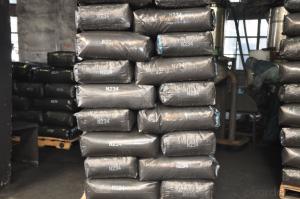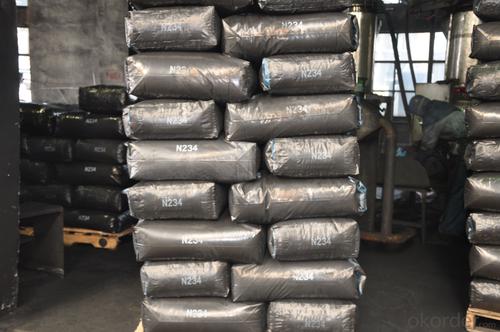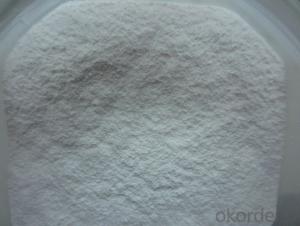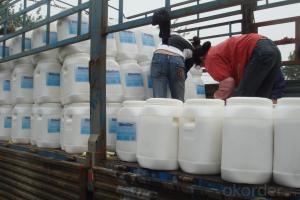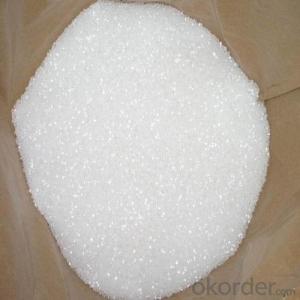Carbon Black N330 Granluar
- Loading Port:
- Tianjin
- Payment Terms:
- TT OR LC
- Min Order Qty:
- -
- Supply Capability:
- 10000MT m.t./month
OKorder Service Pledge
OKorder Financial Service
You Might Also Like
Carbon Black N330 (Granule)
Product Description:
carbon black N330:
1.Usage Rubber Auxiliary Agents;
2.Product Status:Black powder or granular;
3.Standard: ISO 9001:2000
Suggest for Use:
(1) Uses for the tire tread, cord rubber, tires and various rubber industrial products inside.
(2) Usage, and the FDA is a kind of reinforcement for good performance of carbon black, can give a good strong rubber elongation, tear resistance, abrasion resistance and flexibility. So that the FDA's passenger tire rolling loss (hysteresis loss) only in the N300 series carbon black is greater than N351, than the other varieties are small, dispersed in the rubber compound and pressure out of the performance is also good for all kinds of synthetic rubber and natural rubber.
TDS of the Carbon Black N330
Product Varieties | N330 | Pouring density(kg/m3) | 340~420 |
Iodine absorption Value(g/kg) | 77~87 | 300%modulus(Mpa) | -1.9~0.1 |
DBP absorption Value (10-5m2/kg) | 97~107 | Ash content | ≤0.7% |
24Mn DBP(10-5m2/kg) | 83~93 | 45um sieve residue | ≤0.05% |
CTAB surface area(103m2/kg) | 76~88 | 500um sieve residue | ≤0.001% |
STSA/(103m2/kg) | 70~80 | Impurity | NO |
Nsa surface area(103m2/kg) | 73~83 | Fine content | ≤10% |
Tint strength(%) | 99~109 | Tensile strength(Mpa ) | ≥-5.0 |
Heatloss(%) | ≤2.5 | Elongation at failure | ≥-20% |
Safety:
As a matter of good industrial hygiene, gloves and safety glasses with side shields or better eye protection should be worn when handing Carbon Black ,For more information, refer to the MSDS.



- Q: Are biological enzymes harmful to humans?
- A biological enzyme is a biocatalyst that is produced or extracted from a biological organism. The catalyst is a substance that accelerates the chemical reaction and does not change itself in the chemical reaction. In layman's terms, the catalyst is a special substance that catalyzes it. Enzyme as a member of the catalyst family has its own special properties. Each of the biological enzymes will only selectively react to some chemical reactions. A biological enzyme is equivalent to a key that opens a complex compound whose importance is that its unique structure or multidimensional shape matches a part of the group. Once these two parts are combined, the specific chemical bond in the group molecule changes as if the lock was opened. When the reaction is completed, the enzyme is released and repeated with the next group, followed by repeated repeats. Many chemical reactions in the normal temperature conditions, the reaction is very slow so that the whole process is difficult to be perceived.
- Q: Is it faster or slower? The What if you do not?
- The junior middle school textbook is defined as "no reaction" but in fact the catalyst reacts first with a reaction and then the product reacts with other reactants, which will speed up the rate of reflection. Not all catalysts can speed up the reaction rate, but the organic catalyst is more efficient than the inorganic catalyst. "Hydrogen peroxide reacts with hydrogen peroxide more quickly than hydrogen chloride reacts with hydrogen peroxide.
- Q: The chemical equation of heating reaction of benzene and hydrogen under the action of catalyst
- C6H6 benzene + 3H2 - (arrow) C6H12 cyclohexane (Ni catalytic heating)
- Q: Like biological and industrial reations. Thanks.
- Reactions that have high Activation Energy need catalysts to speed up reactions. These reactions aren't spontaneous since the reactants do not have enough energy to overcome the activation energy barrier. Catalysts are compounds that speed up reactions by providing an alternative pathway for the reaction. It is a common misconception that catalysts lower the activation energy. It doesn't actually lower the activation energy, instead it provides an alternative pathway with lower activation energy. For example, breakdown of hydrogen peroxide happens in nature but, relatively slowly. When you add a little bit of manganese dioxide, the breakdown happens a lot faster. Another example is, breakdown of glucose in the body. It is facilitated by an enzyme called amylase (or carbohydrase). An industrial example is the use of vanadium pentoxide (V2O5) in the Contact process, where SO2 is converted to SO3 in the presence of V2O5. Hope that helps!
- Q: What are the characteristics of the catalyst in the chemical reaction?
- In simple terms: the catalyst itself is involved in the reaction, the quality of the reaction before and after the same, the ingredients do not change. The catalyst can change the rate of chemical reaction, increase the rate of reaction called catalyst, slow the inhibitor.
- Q: And hydrogen peroxide
- Can not. They will react
- Q: a) A catalyst such as chlorophyll must be present for some reactions to take place.b) A catalyst such as chlorophyll is not one of the products of a chemical reaction.c) A catalyst such as chlorophyll is not a substance that is used or changed in a chemical reaction.
- It's not C, catalysts are not used up or changed in a chemical reaction, otherwise they would be part of the reaction. Technically B isn't right either because chlorophyll IS the result of a chemical reaction, a bunch of very complex reactions, how else would it come into existence? However I believe this is the answer you're looking for since I'm being too picky... Isn't not A, catalysts do not cause reactions to occur that wouldn't otherwise, they do speed them up considerably though, to the point of it seeming like it must be present for the reaction to take place since it would be so incredibly slow if it wasn't there, but I'm being to picky again... So I would say B.
- Q: It's a GCSE Chemistry questionI just need to know why there are so many
- Many important chemical reactions require inputs of energy to proceed. If a catalyst is present less energy will be required to complete the reaction. Catalysts are substances that are mixed in with materials that are to be reacted, but they themselves do not, in the end, change chemically. They establish a local environment that promotes one or more chemical reactions to take place. A catalyst is important in many industrial processes. Sulfuric acid, which is used to produce batteries, detergents, dyes, explosives, plastics, and many other produces, is commonly produced using a catalyst called vanadium oxide. Ammonia, a primary component of many fertilizers, could not be produced economically without the use of iron oxide which speed up the reaction. The process of catalyst also affects the state of our global environment. Automobiles use catalytic converters to treat exhaust. The metals platinum and palladium facilitate the chemical conversion of noxious gases to more inert forms, greatly decreasing the environmental impact of combustion engines. Probably the most important impact of catalyst is on life itself. All important biochemical reactions are catalyzed by molecules called enzymes. Most enzymes are proteins which catalyze specific reactions within cells. Some examples include polymerases, which synthesize DNS and RNA, peptidases, which digest protein, and ATP synthases, which produce energy for the many different cell activities.
- Q: Chemical "catalyst can speed up the chemical reaction rate of other substances," this sentence right?
- Wrong, the catalyst is divided into two kinds, one is to speed up the chemical reaction speed, and the other is the opposite
Send your message to us
Carbon Black N330 Granluar
- Loading Port:
- Tianjin
- Payment Terms:
- TT OR LC
- Min Order Qty:
- -
- Supply Capability:
- 10000MT m.t./month
OKorder Service Pledge
OKorder Financial Service
Similar products
Hot products
Hot Searches
Related keywords


